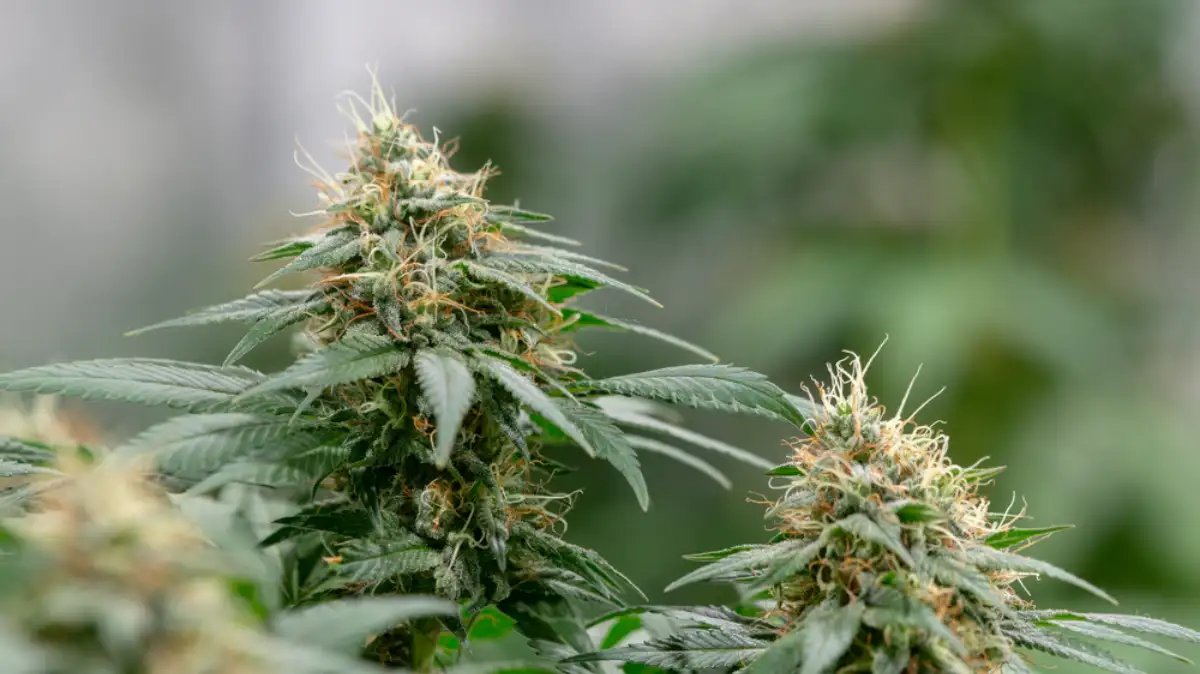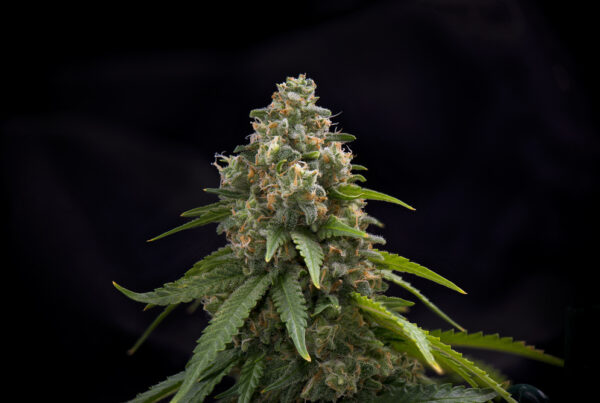Parkinson’s disease is a neurodegenerative disorder that affects millions of people worldwide. Characterized by tremors, muscle stiffness, and difficulties with movement and coordination, Parkinson’s can have a significant impact on a person’s quality of life. While conventional treatments such as medication and therapy can help manage the symptoms, there is growing interest in alternative approaches, including the use of cannabis.
In recent years, cannabis has gained attention for its potential therapeutic benefits in various medical conditions. With its various compounds, including cannabinoids like THC and CBD, cannabis is believed to possess properties that could potentially alleviate symptoms associated with Parkinson’s disease. However, the use of cannabis for medical purposes remains a controversial and complex topic, with legal considerations and limited research on its efficacy.
This blog post aims to explore the relationship between cannabis and Parkinson’s disease, shedding light on the current state of research, potential benefits and risks, and practical considerations for those considering its use. We will delve into the composition of cannabis, its legal status in different jurisdictions, and the medical applications that have been explored thus far. Additionally, we will discuss the various methods of cannabis consumption, dosage guidelines, and possible side effects.
Furthermore, we will delve into the future prospects of cannabis in Parkinson’s disease management, including pending research, potential changes in legislation, and the role of healthcare professionals in guiding patients. By providing an in-depth exploration of cannabis and Parkinson’s disease, this blog post aims to help readers make informed decisions about alternative treatment options and foster a better understanding of this evolving field.
Disclaimer: This blog post is for informational purposes only and should not substitute professional medical advice. Individuals considering the use of cannabis for Parkinson’s disease should consult with their healthcare provider before making any changes to their treatment plan.
Understanding Parkinson’s Disease
Parkinson’s disease is a chronic and progressive neurodegenerative disorder that primarily affects the central nervous system. It is named after James Parkinson, the British physician who first described the condition in 1817. To understand how cannabis may potentially impact Parkinson’s disease, it is crucial to have a comprehensive understanding of the disease itself.
What is Parkinson’s Disease?
Parkinson’s disease is characterized by the gradual degeneration of dopamine-producing cells in the brain, specifically in an area called the substantia nigra. Dopamine is a neurotransmitter responsible for transmitting signals between nerve cells and is crucial for coordinating movement. When the dopamine-producing cells are damaged or destroyed, the communication between the brain and the muscles becomes impaired, leading to the characteristic symptoms of Parkinson’s disease.
Symptoms and Progression
The symptoms of Parkinson’s disease can vary from person to person and typically develop gradually over time. The primary motor symptoms include:
- Tremors: Involuntary shaking or trembling, usually starting in the hands or fingers. Tremors are often more noticeable at rest and can diminish during voluntary movement.
- Rigidity: Stiffness or resistance in the muscles, making it difficult to initiate or control movements. This can result in muscle pain and limited range of motion.
- Bradykinesia: Slowness of movement, making everyday tasks such as walking, writing, or buttoning a shirt challenging and time-consuming.
- Postural Instability: Impaired balance and coordination, leading to difficulty in maintaining an upright posture and an increased risk of falls.
In addition to these motor symptoms, Parkinson’s disease can also cause non-motor symptoms, including:
- Sleep disturbances
- Cognitive changes, such as memory problems and difficulty concentrating
- Mood disorders, like depression and anxiety
- Loss of sense of smell
- Speech and swallowing difficulties
As Parkinson’s disease progresses, symptoms typically worsen, affecting mobility, communication, and overall quality of life. However, the rate of progression can vary significantly among individuals.
Causes and Risk Factors
The exact cause of Parkinson’s disease is still unknown, but it is believed to involve a combination of genetic and environmental factors. Some potential risk factors include:
- Age: Parkinson’s disease typically develops in individuals over the age of 60, although it can occur at younger ages.
- Gender: Men are slightly more likely to develop Parkinson’s disease than women.
- Genetic Factors: Certain genetic mutations have been linked to an increased risk of Parkinson’s disease, although they are relatively rare and account for a small percentage of cases.
- Environmental Factors: Exposure to certain toxins or environmental factors, such as pesticides or heavy metals, may increase the risk of developing Parkinson’s disease.
While these risk factors provide some insights, the precise interplay between genetic and environmental factors in Parkinson’s disease development requires further research.
Diagnosis and Treatment
Diagnosing Parkinson’s disease can be challenging, as there are no definitive tests to confirm the condition. A neurologist typically evaluates a person’s medical history, conducts a physical examination, and assesses the presence of characteristic symptoms to make a diagnosis. In some cases, neuroimaging studies, such as magnetic resonance imaging (MRI) or positron emission tomography (PET) scans, may be used to rule out other conditions or support the diagnosis.
Currently, there is no cure for Parkinson’s disease. However, various treatment options aim to manage symptoms and improve quality of life. The primary treatment approach involves medications that help increase or substitute dopamine in the brain, such as levodopa or dopamine agonists. Other therapies, including physical therapy, occupational therapy, and speech therapy, can also be beneficial in managing symptoms and maintaining functional abilities. In advanced cases, surgical interventions, such as deep brain stimulation, may be considered.
It is important to note that while these treatments can help alleviate symptoms, they do not halt or reverse the progression of Parkinson’s disease. Therefore, there is ongoing interest in exploring alternative and complementary approaches, such as cannabis, to provide additional relief and potentially slow down the disease’s progression.
In the next section of this blog post, we will delve into the world of cannabis, exploring its composition, legal status, and medical applications.

Cannabis: An Introduction
Cannabis, also known as marijuana or weed, is a plant that has been used for various purposes for thousands of years. It contains a range of chemical compounds, known as cannabinoids, which interact with receptors in the body’s endocannabinoid system. These interactions can have various effects on the body and mind, leading to potential therapeutic benefits.
The Composition of Cannabis
Cannabis contains over 100 different cannabinoids, but the two most well-known and studied are delta-9-tetrahydrocannabinol (THC) and cannabidiol (CBD). THC is primarily responsible for the psychoactive effects of cannabis, often associated with feelings of euphoria or “getting high.” CBD, on the other hand, does not produce a psychoactive effect and has gained attention for its potential therapeutic properties.
In addition to cannabinoids, cannabis also contains other compounds, including terpenes and flavonoids, which contribute to its distinct aroma and taste. These compounds may also have their own therapeutic properties and can interact with cannabinoids to produce an “entourage effect,” where the combination of multiple compounds enhances their overall effectiveness.
The Legal Status of Cannabis
The legal status of cannabis varies widely across different countries and regions. While some jurisdictions have legalized its recreational use, others have only approved it for medical purposes, and some maintain strict prohibition. It is essential to understand the specific laws and regulations regarding cannabis in your locality before considering its use.
Medical Use of Cannabis
Cannabis has a long history of medicinal use, dating back thousands of years in various cultures. In recent years, there has been a growing interest in exploring its potential therapeutic benefits in treating a range of medical conditions, including chronic pain, epilepsy, multiple sclerosis, and cancer-related symptoms, among others.
The use of cannabis for medical purposes typically involves the consumption of specific strains or products that are higher in CBD and lower in THC. Medical cannabis is often prescribed or recommended by healthcare professionals, and in some jurisdictions, patients can obtain it through licensed dispensaries or pharmacies.
It is important to note that the medical use of cannabis is still a subject of ongoing research, and its efficacy and safety in various medical conditions are not yet fully understood. Therefore, it is crucial to approach the use of cannabis for medical purposes with caution and under the guidance of a healthcare professional.
In the next section of this blog post, we will explore the potential impact of cannabis on Parkinson’s disease, examining the current research, potential benefits, and risks associated with its use.
The Potential Impact of Cannabis on Parkinson’s Disease
Parkinson’s disease is a complex condition, and the potential impact of cannabis on its symptoms and progression has been a subject of increasing interest. While research in this area is still in its early stages, there have been some promising findings and anecdotal evidence suggesting that cannabis may have potential benefits for individuals with Parkinson’s disease.
Current Research on Cannabis and Parkinson’s
Several studies have explored the effects of cannabis and its constituents on Parkinson’s disease. These studies have primarily focused on the cannabinoids THC and CBD, as they are the most abundant compounds found in cannabis and have shown potential therapeutic properties.
Research suggests that THC, with its psychoactive properties, may help alleviate some of the motor symptoms associated with Parkinson’s disease, such as tremors and bradykinesia. It is believed that THC interacts with the brain’s cannabinoid receptors, modulating the release of dopamine and improving motor control.
On the other hand, CBD, which lacks psychoactive effects, has gained attention for its potential neuroprotective and anti-inflammatory properties. Preclinical studies on animal models of Parkinson’s disease have shown that CBD may have a protective effect on dopamine-producing cells and reduce the neuroinflammation associated with the condition.
While these preliminary findings are encouraging, it is important to note that more research is needed to fully understand the mechanisms of action and therapeutic potential of cannabis in Parkinson’s disease.
Potential Benefits and Risks
While some individuals with Parkinson’s disease report positive experiences with cannabis, it is crucial to consider both the potential benefits and risks associated with its use.
Potential Benefits:
- Symptom Management: Cannabis may help alleviate some of the motor symptoms of Parkinson’s disease, such as tremors, rigidity, and bradykinesia.
- Pain Relief: Cannabis has been used for its analgesic properties, and it may help individuals with Parkinson’s disease manage pain associated with the condition.
- Sleep Improvement: Sleep disturbances are common in Parkinson’s disease, and cannabis may help improve sleep quality and reduce insomnia.
Potential Risks:
- Cognitive Effects: Cannabis use, particularly THC-rich strains, may impair cognitive function and memory, which can be a concern for individuals with Parkinson’s disease who may already experience cognitive changes.
- Psychiatric Effects: Some individuals may experience adverse psychiatric effects, such as anxiety, paranoia, or hallucinations, when using cannabis.
- Drug Interactions: Cannabis may interact with certain medications used to manage Parkinson’s disease, potentially leading to unwanted side effects or reduced efficacy. It is important to consult with a healthcare professional before using cannabis alongside other medications.
Patient Testimonials
While anecdotal evidence should be interpreted with caution, it is worth considering the experiences of individuals with Parkinson’s disease who have used cannabis. Some patients report improvements in mobility, reduction in tremors, better sleep, and an overall enhanced quality of life. These testimonials provide insights into the potential benefits that cannabis may offer, but they should not be considered as definitive evidence.
In the next section of this blog post, we will discuss practical considerations for using cannabis for Parkinson’s disease, including methods of consumption, dosage guidelines, and possible side effects.
How to Use Cannabis for Parkinson’s Disease
When considering the use of cannabis for Parkinson’s disease, it is important to understand the various methods of consumption, dosage guidelines, and possible side effects. This section aims to provide practical considerations for individuals who are interested in using cannabis as a potential adjunct therapy for their Parkinson’s symptoms.
Methods of Consumption
Cannabis can be consumed in various ways, each with its own advantages and considerations. The most common methods of cannabis consumption include:
- Inhalation: This method involves smoking dried cannabis flower or inhaling vaporized cannabis extracts. Inhalation provides rapid onset of effects but may irritate the respiratory system and is not suitable for individuals with lung conditions.
- Oral Ingestion: Cannabis can be consumed orally through edible products, such as capsules, oils, or infused foods and beverages. Oral ingestion offers longer-lasting effects but has a slower onset due to digestion and metabolism processes. It is important to note that the effects of edible cannabis products can be more potent and longer-lasting compared to inhalation.
- Sublingual Administration: Cannabis tinctures or oils can be placed under the tongue, allowing for absorption through the mucous membranes. Sublingual administration provides faster onset compared to oral ingestion but slower onset compared to inhalation.
- Topical Application: Cannabis-infused creams, lotions, or balms can be applied directly to the skin to target localized symptoms, such as muscle stiffness or pain. Topical application does not produce psychoactive effects as the cannabinoids do not enter the bloodstream.
The choice of consumption method depends on individual preferences, desired effects, and any specific considerations or restrictions due to health conditions.
Dosage Guidelines
Determining the appropriate dosage of cannabis for Parkinson’s disease can be challenging, as individual responses can vary greatly. It is crucial to start with a low dose and gradually increase as needed, under the guidance of a healthcare professional experienced in cannabis therapeutics.
Dosage considerations include:
- THC:CBD Ratio: The ratio of THC to CBD in the cannabis product can impact its effects. Higher CBD ratios may be more suitable for individuals who are sensitive to the psychoactive effects of THC or who want to avoid them altogether.
- Individual Sensitivity: Each person’s response to cannabis can differ, so it is important to find the lowest effective dose for symptom relief without experiencing unwanted side effects.
- Titration: The process of finding the optimal dose often involves titration, which means adjusting the dosage gradually and monitoring the effects to achieve the desired symptom relief while minimizing side effects.
- Strain Selection: Different cannabis strains have varying levels of cannabinoids and terpenes, which can influence the effects. Some strains may be more suitable for certain symptoms, such as strains with higher CBD content for anxiety or strains with higher THC content for pain relief.
Possible Side Effects
While cannabis is generally considered safe, it can have potential side effects, especially at higher doses or with certain strains. Some common side effects include:
- Dry mouth
- Red eyes
- Increased heart rate
- Dizziness or lightheadedness
- Impaired coordination or balance
- Cognitive impairment, such as memory or concentration difficulties
It is important to note that these side effects are typically temporary and subside as the effects of cannabis wear off. However, individuals with pre-existing medical conditions or those taking other medications should exercise caution and consult with a healthcare professional before using cannabis.
In the next section of this blog post, we will explore the future prospects of cannabis in Parkinson’s disease management, including pending research, potential changes in legislation, and the role of healthcare professionals.

The Future of Cannabis and Parkinson’s Disease
As research on cannabis and its potential benefits in Parkinson’s disease continues to evolve, the future holds several important considerations. This section will explore the future prospects of cannabis in Parkinson’s disease management, including pending research, potential changes in legislation, and the role of healthcare professionals.
Pending Research
While there is growing interest in the use of cannabis for Parkinson’s disease, more research is needed to understand its full potential and optimize its therapeutic application. Areas of ongoing and future research may include:
- Clinical Trials: Conducting well-designed clinical trials to evaluate the efficacy, safety, and optimal dosage of cannabis or specific cannabinoids in Parkinson’s disease.
- Mechanism of Action: Investigating the underlying mechanisms by which cannabis compounds interact with the endocannabinoid system and potentially modulate the symptoms and progression of Parkinson’s disease.
- Long-term Effects: Studying the long-term effects of cannabis use in individuals with Parkinson’s disease to better understand its impact on symptom management, disease progression, and quality of life.
- Specific Symptom Relief: Exploring the potential benefits of cannabis for specific symptoms of Parkinson’s disease, such as sleep disturbances, cognitive changes, or mood disorders.
As more research becomes available, it will provide a solid scientific foundation for healthcare professionals and patients to make informed decisions regarding cannabis use as part of Parkinson’s disease management.
Potential Changes in Legislation
The legal landscape surrounding cannabis is dynamic and subject to change. As more countries and regions reconsider their cannabis policies, there is the potential for shifts in legislation that could impact access to medical cannabis for individuals with Parkinson’s disease.
Greater legalization and regulation of medical cannabis may lead to improved access, quality control, and standardized dosing guidelines. However, it is important to navigate these changes responsibly and in accordance with local laws and regulations.
The Role of Healthcare Professionals
The involvement of healthcare professionals is crucial in the safe and effective use of cannabis for Parkinson’s disease. They play a vital role in:
- Educating Patients: Providing accurate and up-to-date information on the potential benefits, risks, and limitations of cannabis in Parkinson’s disease management.
- Monitoring and Guidance: Monitoring patients’ response to cannabis treatment, assessing potential side effects, and adjusting dosages as needed.
- Collaboration: Collaborating with other healthcare professionals, such as neurologists or movement disorder specialists, to ensure comprehensive and coordinated care for individuals with Parkinson’s disease.
Healthcare professionals can help patients make informed decisions about incorporating cannabis into their treatment plans while considering individual needs, potential drug interactions, and overall care objectives.
In conclusion, the future of cannabis in Parkinson’s disease management holds both promise and challenges. Ongoing research, potential legislative changes, and the involvement of healthcare professionals will contribute to a better understanding of its therapeutic potential and ensure its safe and responsible use. As the field continues to advance, individuals with Parkinson’s disease and their caregivers can stay informed and engaged to make well-informed decisions about incorporating cannabis into their treatment approach.






